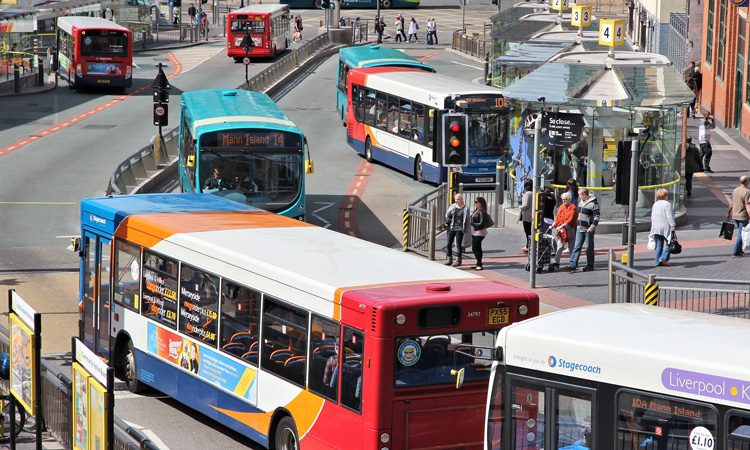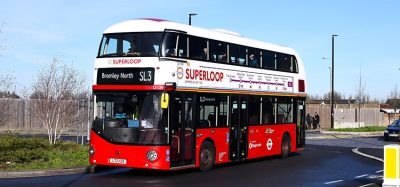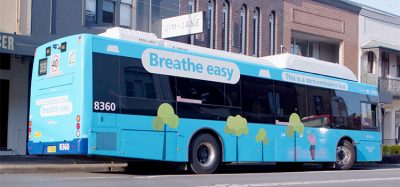Report explores changes in bus demand in England since 2009
- Like
- Digg
- Del
- Tumblr
- VKontakte
- Buffer
- Love This
- Odnoklassniki
- Meneame
- Blogger
- Amazon
- Yahoo Mail
- Gmail
- AOL
- Newsvine
- HackerNews
- Evernote
- MySpace
- Mail.ru
- Viadeo
- Line
- Comments
- Yummly
- SMS
- Viber
- Telegram
- Subscribe
- Skype
- Facebook Messenger
- Kakao
- LiveJournal
- Yammer
- Edgar
- Fintel
- Mix
- Instapaper
- Copy Link
Posted: 27 January 2020 | Sam Mehmet (Intelligent Transport)
The report investigated bus user demographics, reasons for bus use and geographical influences for bus demand.


A new report – ‘The shape of changing bus demand in England’ – by the Independent Transport Commission (ITC), and authored by Dr Scott Le Vine and Emeritus Professor Peter White, has used National Travel Survey (NTS) data to explore what has been happening to bus travel demand in England since 2009, and investigates how the bus market has been changing.
The key findings from the report include:
- Outside London, the number of annual bus journeys in England fell by 15 per cent
- The proportion of the population who are ‘bus users’ has declined from 21 per cent to 18 per cent, the opposite of rail where a greater percentage of the population is travelling by rail
- The remaining ‘bus users’ are using the bus more intensely, making five per cent more journeys
- Overall, local bus travel by women has fallen by 15 per cent and men by six per cent
- The highest rates of bus journeys are by people between ages 17 and 20, particularly females
- Men between 17 and 39 are making 14 per cent more trips than in 2009, with five per cent more miles per trip
- Traditional bus ‘core’ markets – the unemployed, students, non-car owners, low personal income (less than £5,000) – have decreased by 15 per cent, 10 per cent, 10 per cent and 13 per cent respectively
- Usage has fallen most steeply in the lowest income groups, due to increased car ownership
- Nationally, there is no strong evidence of lost market share to private hire services (Uber) and taxis
- Of all journey purposes by bus, shopping has fallen the most due to online shopping and the decline of the high street
- Local bus shopping trips have declined by 25 per cent since 2009, compared with shopping trips by all modes decreasing by five per cent, related to the increasing trend for out-of-town shopping centres
- Low-density rural counties (Lincolnshire, Yorkshire) and historic industrial areas (Stoke, Middlesbrough) are the areas with the strongest decline in bus usage with falls of over 20 per cent. However, much of southern England, including low-density locations (West Berkshire, Cornwall) and urban areas where bus usage was already high (Reading, Bristol, Brighton), have seen bus use increase.
“It is clear that the decline in bus travel outside London has been caused by a shrinkage in the proportion of the population who are bus users, rather than existing travellers using the bus less – the opposite trend that the ITC uncovered in the rail market”, said Dr Matthew Niblett, Director of the ITC.
“While traditional core bus markets – people on low-incomes, non-car owners, students, pensioners and those shopping – have been turning away from the bus since the great recession in 2008, it’s not all gloom for bus travel. The gender gap has narrowed, economically flourishing cities in southern England have delivered strong numbers, while usage has intensified amongst younger men,” he added.
Responding to the publication, Katy Taylor, Group Commercial and Customer Director, The Go-Ahead Group, said: “The report from the Independent Transport Commission underscores the stark need for a National Bus Strategy to realise the full potential of buses to support our economy, society and environment.
“Go-Ahead has led the way in calls for a national strategy that can reinvigorate local communities. Over 60 per cent of public transport journeys are by bus, and increasing bus use is critical to reducing car dependency, to enable improved health and well being, social inclusion, air quality and sustainable growth. We must put bus at the heart of planning for schools, hospitals, housing, town centres and social services.
“Whilst the national picture is challenging, Go-Ahead is achieving growth in some cities through partnership working with local authorities to tackle congestion and prioritise bus travel. Since 2011, bus usage has risen by 8.3 per cent in Brighton, 18.8 per cent in Bournemouth/Poole and 25.8 per cent in Southampton.”
Related topics
Passenger Accessibility, Passenger Experience, Public Transport
Related modes
Bus & Coach
Related cities
UK
Related organisations
Independent Transport Commission (ITC), The Go-Ahead Group
Related people
Dr Matthew Niblett, Dr Scott Le Vine, Katy Taylor, Professor Peter White








